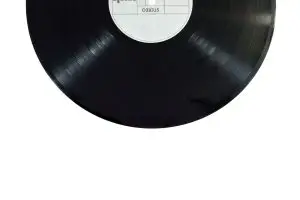When you become a musician, it can be hard to figure out if you’re successful in your music career or not. The problem, however, lies in determining how you can measure your success. Some metrics allow us to predict how successful you’ve become in the industry. This article covers seven music metrics every artist should know and how they work; let’s take a look.
Sales
Making money is a focus of any successful business and being a musician is also a business for you. One top music metric you have to consider when measuring your success in the music industry is sales. This metric tops the list of music metrics, and it is famous metric musicians use. First, you have to consider album sales and how many sales you’ve made in this category over the years. Although album sales shouldn’t be the only source of revenue, they still matter. They’re a top indicator of your fans and how loyal they are to invest in your music to show support for your career.
Another part of sales that you need to consider is ticket sales. If you’ve held concerts and gigs over the years, you can also use it to check how much you’ve grown over the years. In addition, if you’ve sold tickets to concerts months after months, it is a great way to measure your success every month. If you also sell merchandise online and offline, you can also consider that in the sales metric. It is an indicator of your fans and how willing they are to invest in you and your brand. At the top of your sales metric is revenue generated through licensing and synchronization. If you create songs and syn them or measure them for use, you can also measure the success by how many people used your music over the months or yearly.
Playlist Reach
Another top music metric you should consider to measure your success and monitor is the playlist reach. A playlist is one of the top ways people discover music. It is a great way to get the artist in front of many people who will care about their music. It is one of the top music metrics for those whose music is entirely online. Also, it is the total number of followers from each playlist your track appears on. The playlist reaches metric shows the audience size that your audience faces exposure to. Labels mostly use it to measure support from each playlist how reliant your releases would be on the editorial playlist.
If you have a higher playlist reach from editorial playlists like Spotify’s rap caviar and many more than you do from non-editorial, you might have a problem. One issue is that when the editorial playlist removes you, you might notice your growth taking a device. Most times, this metric is bloated on release week and also on New Music Friday. However, amongst the top music metrics, this metric is one of the top music metrics every musician should monitor
Monthly Listeners Music Metrics
Another vital music metric every musician should monitor is the monthly listener on streaming platforms. Your monthly listeners are not the number of streams your song has. Instead, it is the number of unique listeners you have as a musician in a month. It covers each listener you have and doesn’t factor in how many times they stream your song. It means that a person who only streams your music one time and someone who streams your song 100 times is the same. They each count as one monthly listener and are a top way of determining the success of your music on music streaming platforms.
You can always find the number of your monthly listeners in the monthly report from the streaming platform. They’re usually lumped in with the number of monthly streams you have. In addition, you can easily manipulate monthly streams than the monthly listeners. However, as an artist looking out for long-term success, the monthly followers are an essential metric you need to consider. It is one of the top metrics music artists should monitor.
Profile Followers
Another top metric amongst the leading music metrics every musician should monitor is the profile followers; this is the number of followers a musician has on their profiles on streaming platforms. Suppose you have carried out a campaign to promote your music to millions of people and increase your revenue streams. In that case, your number of profile followers shows how many people are aware of you and are interested in your music. When you have a high playlist reach or monthly listeners and very low profile followers, people know the song and not the artist.
When you consider the followers to stream ratio, it indicates the artist’s interest in the artist vs the streams generated through playlists and algorithms. If, after calculating this ratio, you get less than 1:20 followers to monthly listeners ratio, then your branding strategy needs an overhaul. It is also an indicator that you rely too much on editorial support and need to start marketing yourself individually. Most established musicians with over 5 million monthly listeners usually have 1:5 followers to monthly listeners ratio on average. On the other hand, upcoming artists with about 1 million monthly listeners get about 1:10 on average.
Territory Growth
Territory growth is another top metric amongst the music metrics musicians should monitor. It shows the difference in how many listen to your music in a country, region, or city. Territory growth is a metric most people use to measure their global reach and growth worldwide. Streaming platforms and social media gives you access to a more global audience. This feature allows you to enjoy exposure in different territories and cross over into larger markets like the US and Canada. As a musician trying to measure growth over the months or years, you should measure your territory growth. It shows you the rate at which your global reach is increasing based on territories and where your global reach might be diminishing.
Chart Performance Music Metrics
This metric ranks amongst the top music metrics every musician needs to measure. This music metric is a strong indicator of how well you’re doing as a musician. It is the ranking of the top played, watched, streamed, or sold songs and albums in a given period. SoundScan usually reports charts. There are different charts you need to look out for, and some of them include Spotify Global, Billboard, iTunes, SoundCloud, Shazam, and many others.
Each platform has its method of measuring the top music, and many people look to it to determine the top musicians. Many digital charts indicate the performance of a musician within their specific algorithm. The chart performance is vital and showing up on charts helps steer your visibility and attract attention to the artist. Measuring how many times you’ve appeared on music charts and your position on music charts is a top music metric. Every musician should monitor the growth of their music through this music metric.
Social Media Music Metrics
Although this is the last amongst the top seven metrics you should monitor as a musician, it is certainly not the least. It includes your social media popularity and how many times you’re measured on various social media platforms. Most people measure the social media metric weekly to determine their growth or decline amongst social media users. This metric includes measuring how many mentions you get on Google search. You can use Google alerts to discover the number of times a search on your name takes place on search engines. The social media metric is vital because it can significantly increase your monthly listeners, streams, and profile followers. Some factors affect the social media metrics and their calculation, and they are.
Engagement
When calculating the social media metric, one of the top factors that affect the result is engagement. It helps you understand the sentiment of your audience when you make a release. Engagement goes beyond simply having YouTube views, and Facebook likes. It involves comments on your music and people who are willing to share your comment. It consists of the dedication social media users show to help grow your music. This factor is essential when calculating social media growth because when you create a positive buzz, it has a long-term effect on your music career and fan base. Discussions beyond Twitter and IG are considered for engagement and include discussions on Reddit and other discussion platforms. Engagement shows who is interested in your whole brand and not just music.
Music Blogs and Podcast Reach
This factor is another indicator of success in the social media metric. It usually covers PR and focuses on the major influences. If the top music blogs, podcasts, and top influencers in the music industry talk about you, it shows growth. The music industry continues to grow, and no one places focus on the top influencers only. It also covers those in the industry who promote content through videos, tweets, Facebook posts, and other things. If people are talking about you or writing about you, it is a top indicator of your growth as a musician. It shows that you are becoming relevant in the music industry and strongly affect social media metrics and their outcome.
Network Growth
Another top indicator in the social media metric is your network and the growth on a monthly or yearly basis. Your network includes your professional and fan base. The fan base is influenced by the engagement you get and determines your fan base network growth. Your professional network also affects the social media metric. It indicates the top people in the industry talking about you online and willing to collaborate with you on the network. Suppose you notice your professional network growing due to the social media buzz you’re getting. In that case, it is also a strong indicator of how good your music is doing and affects the social media metric.
Conclusion – Music Metrics
It used to be easy to determine a musician’s growth. All you had to do was consider their album sales, and you were clear on how successful they are. However, times have changed, and in this digital age, there are many metrics to consider when defining your success.
There are several new music metrics people use to measure growth in the music industry. This blog post successfully narrows the list down to the top 7 music metrics every musician should monitor. You can choose to measure all the metrics reviewed in this article or simply focus on a select few. These metrics cover every dimension of a musician’s career, including various markets, mediums, and platforms. Check out these music metrics and determine your growth in the music industry today.






